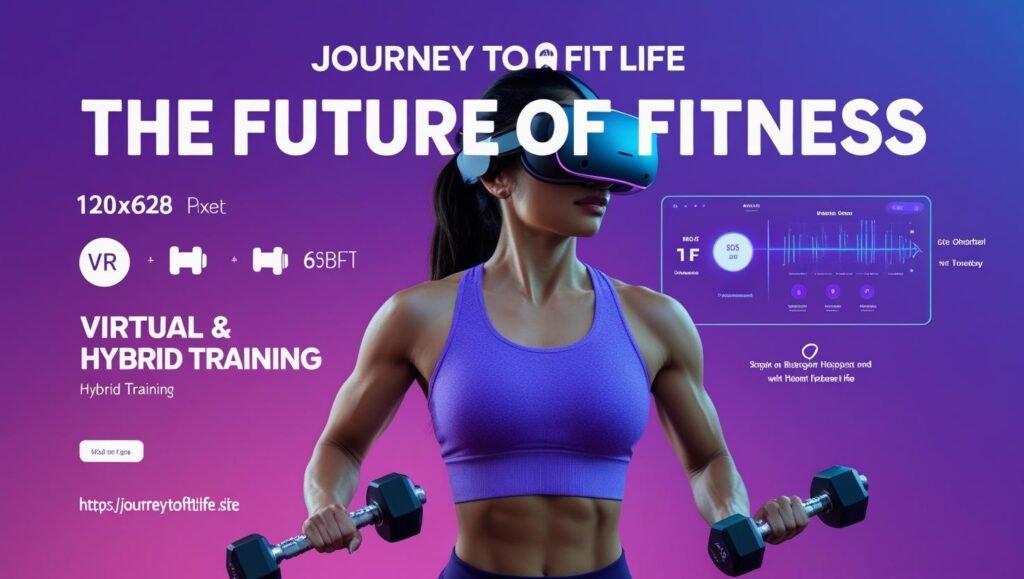
The Future of Fitness: Virtual and Hybrid Training Models
How technology is transforming our workout routines in the post-pandemic world
Find Your Ideal Virtual Fitness Experience
Not sure which virtual fitness option is right for you? Answer a few questions to discover your perfect match:
What’s your primary fitness goal?
Your Ideal Virtual Fitness Match
The Digital Fitness Revolution: Beyond the Pandemic
The fitness landscape has undergone a dramatic transformation since 2020. What began as a necessity during global lockdowns has evolved into a permanent fixture in our wellness routines. Virtual fitness classes and hybrid training models aren’t just alternatives to traditional gym workouts—they’re reshaping how we think about exercise itself.
According to recent industry data, the online fitness market is projected to reach $59 billion by 2027, growing at a CAGR of 33.1% from 2020. This explosive growth reflects a fundamental shift in consumer preferences that extends far beyond pandemic-related restrictions.
Before diving deeper into these innovations, you might want to understand your current fitness baseline. Our BMI calculator and body fat percentage calculator can help establish your starting point for any virtual fitness journey.
The Rise of Virtual Fitness Platforms
Today’s virtual fitness landscape offers unprecedented variety. From live-streamed classes with real-time instructor feedback to on-demand libraries of thousands of workouts, consumers can access expert guidance without leaving home. Major platforms like Peloton, Apple Fitness+, and Alo Moves have revolutionized how we experience guided workouts.
The advantages are compelling:
- Convenience: No commute time means more time for actual exercise
- Variety: Access to thousands of classes across different modalities
- Privacy: Perfect for beginners who might feel intimidated in group settings
- Cost-effectiveness: Often more affordable than gym memberships
For those new to online workouts, our guide on home workouts without equipment provides an excellent starting point. Additionally, if you’re concerned about calorie expenditure during virtual sessions, our calorie calculator can help you track your energy balance.
Hybrid Training: The Best of Both Worlds
Hybrid training models combine in-person and virtual components, offering flexibility without sacrificing community. Many traditional gyms now offer “omnichannel” memberships, allowing members to attend physical classes or join virtually from home.
This approach recognizes that fitness isn’t one-size-fits-all. On busy days, a quick 15-minute virtual session might be ideal (check out our 15-minute full-body workout plan), while weekends might allow for in-person training with specialized equipment.
Hybrid models also excel at accountability. Many incorporate wearable technology that tracks metrics across both virtual and in-person sessions, creating a seamless fitness experience. Our target heart rate calculator can help you optimize intensity across different workout environments.
The Immersive Future: VR and AR Workouts
Perhaps the most exciting development in virtual fitness is the integration of virtual reality (VR) and augmented reality (AR) technologies. These immersive experiences transform exercise from obligation to adventure.
VR fitness applications like Supernatural, FitXR, and Holofit transport users to stunning virtual environments where they can box, dance, or cycle through exotic landscapes. Studies show these gamified workouts can increase exercise adherence by up to 40% compared to traditional routines.
AR applications overlay digital elements onto the real world, creating hybrid experiences that enhance traditional workouts. Smart mirrors like Mirror, Tonal, and Tempo use this technology to provide form feedback and create the sensation of being in a studio class while at home.
This technological revolution aligns perfectly with our article on workouts of the future in 2025, which explores these innovations in greater depth.
Optimizing Nutrition for Virtual Fitness Success
As workout routines evolve, so too should nutrition strategies. Virtual and hybrid training models often involve different energy expenditures and recovery needs compared to traditional gym sessions.
Our suite of nutritional tools can help you align your diet with your new fitness approach:
- Macro calculator for balanced nutrition
- Protein calculator for muscle recovery
- Hydration calculator for optimal performance
For comprehensive meal planning that complements your virtual fitness routine, explore our 7-day healthy meal plan for beginners and easy weekly meal prep guide.
Overcoming Common Virtual Fitness Challenges
Despite its many advantages, virtual fitness comes with unique challenges. Here’s how to address the most common obstacles:
Motivation Without In-Person Community
Create accountability through virtual fitness buddies, scheduled classes, and tracking apps. Our article on staying motivated on your fitness journey offers practical strategies.
Form and Technique Concerns
Utilize platforms with AI form feedback, set up mirrors, or schedule occasional in-person sessions with trainers to ensure proper technique.
Equipment Limitations
Explore our easy exercises for beginners that require minimal equipment, or invest in versatile tools like resistance bands and adjustable dumbbells.
Digital Fatigue
Balance screen-based workouts with outdoor activities and tech-free exercise sessions to prevent burnout.
The Future Landscape: What’s Next for Virtual Fitness?
As we look ahead, several trends are poised to further transform the virtual and hybrid fitness space:
AI-Powered Personalization
Machine learning algorithms will increasingly customize workouts based on individual progress, preferences, and physiological responses. This hyper-personalization will rival the attention of personal trainers.
Haptic Feedback Technology
Wearable devices with haptic feedback will provide physical cues for form correction and intensity adjustments, enhancing the quality of virtual instruction.
Social Fitness Metaverses
Virtual worlds dedicated to fitness will enable social interactions during workouts, recreating the community aspect of traditional gyms in digital spaces.
Biometric Integration
Advanced tracking of metrics like heart rate variability, oxygen saturation, and even hormonal fluctuations will inform workout recommendations. Our VO2 max calculator offers a glimpse of this data-driven approach.
Conclusion: Embracing the Hybrid Fitness Future
The evolution of fitness isn’t about choosing between virtual and physical—it’s about creating a personalized blend that fits your lifestyle, preferences, and goals. The most successful fitness journeys of tomorrow will likely incorporate elements of both worlds, leveraging technology to enhance rather than replace the human experience of movement.
Whether you’re tracking your progress with our weight loss calculator, exploring HIIT workouts, or discovering the benefits of yoga for weight loss, the future of fitness offers unprecedented opportunities to customize your wellness journey.
The question isn’t whether virtual fitness will replace traditional models—it’s how we can thoughtfully integrate digital innovations to create more accessible, engaging, and effective fitness experiences for everyone.
Popular Virtual Workout Types
Live-Streamed Classes
Real-time instruction with community interaction and instructor feedback. Perfect for those who thrive on structure and accountability.
On-Demand Libraries
Thousands of pre-recorded workouts available anytime. Ideal for flexible schedules and those who prefer variety in their routine.
VR Fitness Games
Immersive experiences that make exercise feel like play. Great for those who find traditional workouts boring or repetitive.
